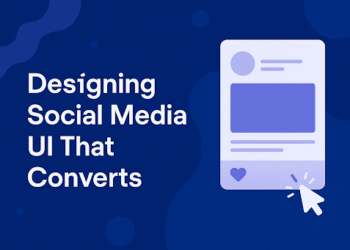One of the most shocking achievements of the era of artificial intelligence and digitally manipulated media is deepfakes; at the same time, they are fascinating and terrifying. The deep-faked videos, soundbites, and images may be highly realistic facsimiles of the actual individuals, and even the trained viewers may not be able to see the actual truth or fiction.
Although deepfakes can be generated to entertain or satirize, others can be used to question misinformation, political intrusion, and online trust. In this paper, we will discuss seven deepfake examples that took the world by surprise, illustrating both the artistic possibilities and the rather hazardous consequences of such a potent tool.
1. Barack Obama says Trump is a Dipsht (2018)
It is, perhaps, one of the first deepfakes to become viral due to its shocking verisimilitude as former U.S. President Barack Obama was shown to insult then-President Donald Trump. As it turns out, the video itself was made by filmmaker Jordan Peele as a public awareness video to warn viewers about the dangers of synthetic media. The message was genuine, whereas the content was fake: given that Obama can be committed to saying anything on video, anyone can.
Impact: The video brought mainstream attention to the fact that it is easier to create convincing fake content and caused worldwide discussions of the implications of the fake content in politics and journalism.
2. TikTok-Tom Cruise (2021)
Hyper-realistic videos of actor Tom Cruise appeared on TikTok, where he showed off magic tricks, golfing, and informally talking. But they were fake, and this was the creation of Belgian visual effects artist Chris Ume and an impersonator with the deepfake technology.
Effect: The videos were so real that they were mistaken by millions of people for being real. They pointed out that entertainment and celebrity content is easy to fake and ingest as actual, which leads to apprehension concerning identity misuse and consent.
3. Urging the people of Ukraine to give up (2022) Zelenskyy Deepfake (2022)
One of the most ancient deepfake videos during the Russia-Ukraine war was that of the Ukrainian President Volodymyr Zelenskyy, in which the Ukrainian President had appeared to request the Ukrainian soldiers to surrender their weapons. The video was refuted by Ukrainian authorities quickly, but it went through social media.
Impact: This was one of the most hazardous applications of deepfakes in real-time warfare. It demonstrated how artificial videos could be used as a weapon to propagate false information and control the mood of the masses in critical situations.
4. Fake Instagram Confession by Mark Zuckerberg (2019)
A video deepfake of Facebook CEO Mark Zuckerberg bragging about the ability to control the stolen data of billions of people was made by an artist duo. The video was uploaded on Instagram (owned by Meta) to check the company’s policies on manipulated media.
Effect: This contentious case pushed moderation boundaries on the platform and brought up concerns of corporate responsibility when dealing with AI-generated material.
5. YouTube (2020 Present) Fake Elon Musk Scams (2020Present)
Thousands of deepfake videos of Elon Musk have been posted on YouTube, usually in livestream form, which promote cryptocurrency scams. These videos depict Musk allegedly promoting investment programs and guaranteeing returns that cannot be true.
Effect: Large amounts of money have been lost through these scams, with thousands of individuals getting duped. It revealed that deepfakes could not only be used to deceive, but on a grand scal,e because of the ability to commit fraud.
6. Morgan Freeman Narration That Never Happened (2021)
An example of a deepfake video making its rounds on social media was a purported actor, Morgan Freeman, giving a philosophical monologue. The voice, the tones, and the expressions were all real. But all of this was not done by Freeman himself.
Effect: This case showed the strength of voice cloning and facial mapping working together. It distorted the boundary between appreciating and unauthorized use of likeness.
7. The AI Podcast Episodes of Joe Rogan (2023)
Whole podcasts where Joe Rogan interviews AI-generated fake representations of guests, such as Steve Jobs, were authored with AI voice synthesis and writing. These episodes were frighteningly authentic and spread widely on the Internet a lot.
Impact: The ability to cause hours-long artificial dialogue sounded alarms to podcasting, journalism, and intellectual property. It demonstrated that long-form media is not a place that is untouched by AI manipulation either.
Lessons These Deepfakes Seem to Teach
Although deepfakes may be fun or educational, these examples show that they can be deceptive and manipulative, and even lead to physical harm. There is an even finer line between satire and deception, and with the evolution of technology, it is getting more difficult to tell fakes.
Just as far as political warfare, internet impersonation, and financial fraud, the extent of deepfake abuse is enormous and expanding. The shocking examples make us remember that there is a necessity for deepfake detection and other measures:
- Public awareness
- Regulatory frameworks
- Responsible AI development
- Strong detection tools
Final Thoughts
Deepfakes are not the technology of tomorrow or the technological progress anymore, but they might as well become its reality, and not only its reality in terms of politics or the entertainment industry, but its reality in terms of cybersecurity and even media integrity. We must look at the threats that individuals, platforms, and even the government must understand as we roll into this era of AI-driven life.
Deepfakes will keep developing, whether in fun or fraud. Our initial protection is to be aware.














